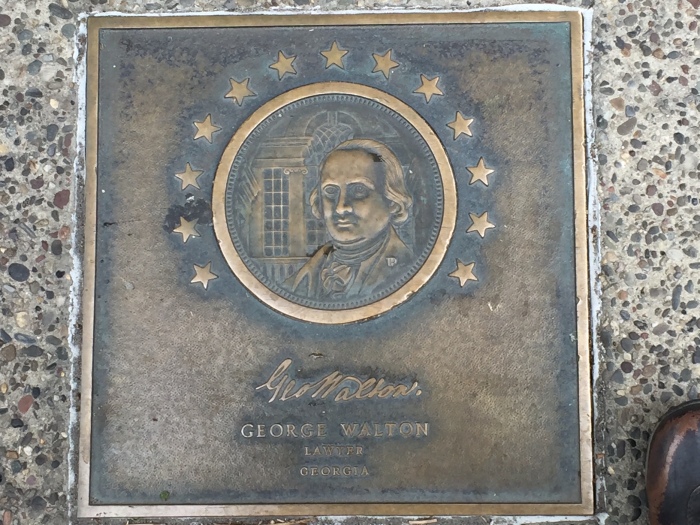 Everybody agrees that George Walton had a Dickensian childhood. Whether or not his Uncle was the kindly Mr. Bronlow or the cruel Mr. Bumble seems to be a matter of contention, but that he was poor and an orphan is not. Walton was a patriot early on and pushed his Georgian neighbors at a series of meetings at Tondee’s Tavern. He lasted longer in the Second Continental Congress than most but, in 1778, left in order to join the militia. He was shot and fell from his horse in the siege on Savannah. He was captured by the British who released him so that he could seek medical care for the wound in his thigh. Once he was healed he turned himself in to the British and was put in a prisoner’s jail in Sunbury, Georgia. The British felt that they had an important prisoner, since he had signed the Declaration, and used him as a bargaining chip, trying to get a brigadier general released in exchange for Walton, but settling for a naval captain.
Everybody agrees that George Walton had a Dickensian childhood. Whether or not his Uncle was the kindly Mr. Bronlow or the cruel Mr. Bumble seems to be a matter of contention, but that he was poor and an orphan is not. Walton was a patriot early on and pushed his Georgian neighbors at a series of meetings at Tondee’s Tavern. He lasted longer in the Second Continental Congress than most but, in 1778, left in order to join the militia. He was shot and fell from his horse in the siege on Savannah. He was captured by the British who released him so that he could seek medical care for the wound in his thigh. Once he was healed he turned himself in to the British and was put in a prisoner’s jail in Sunbury, Georgia. The British felt that they had an important prisoner, since he had signed the Declaration, and used him as a bargaining chip, trying to get a brigadier general released in exchange for Walton, but settling for a naval captain.
Despite some residual problems from his injury, Walton had an active life after the war, serving as Georgia’s Chief Justice, governor, and U.S. Senator. He was also a trustee of Franklin College, which would become the University of Georgia. He died in 1804 and was buried in Augusta, Georgia.
Hear the stories of this and other Signers by taking a tour with Bow Tie Tours. We make history come alive with the stories of all our Founders.